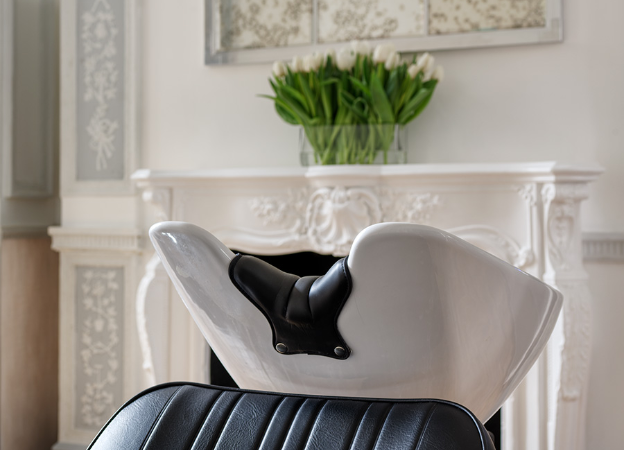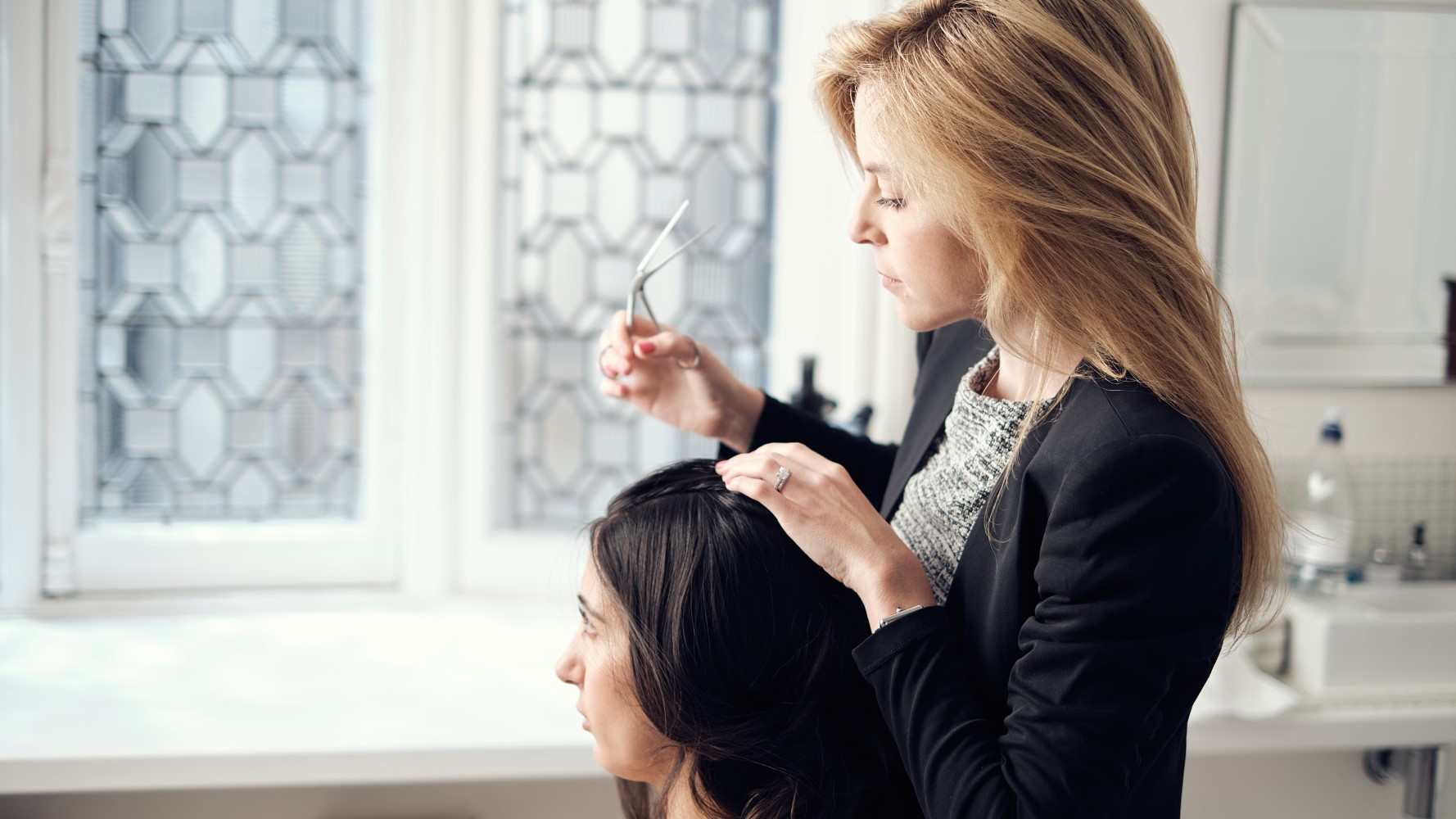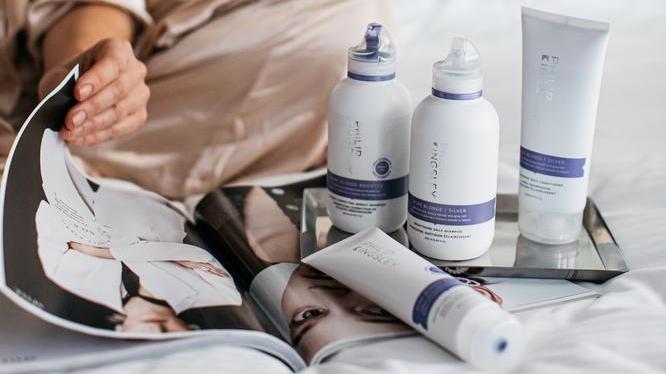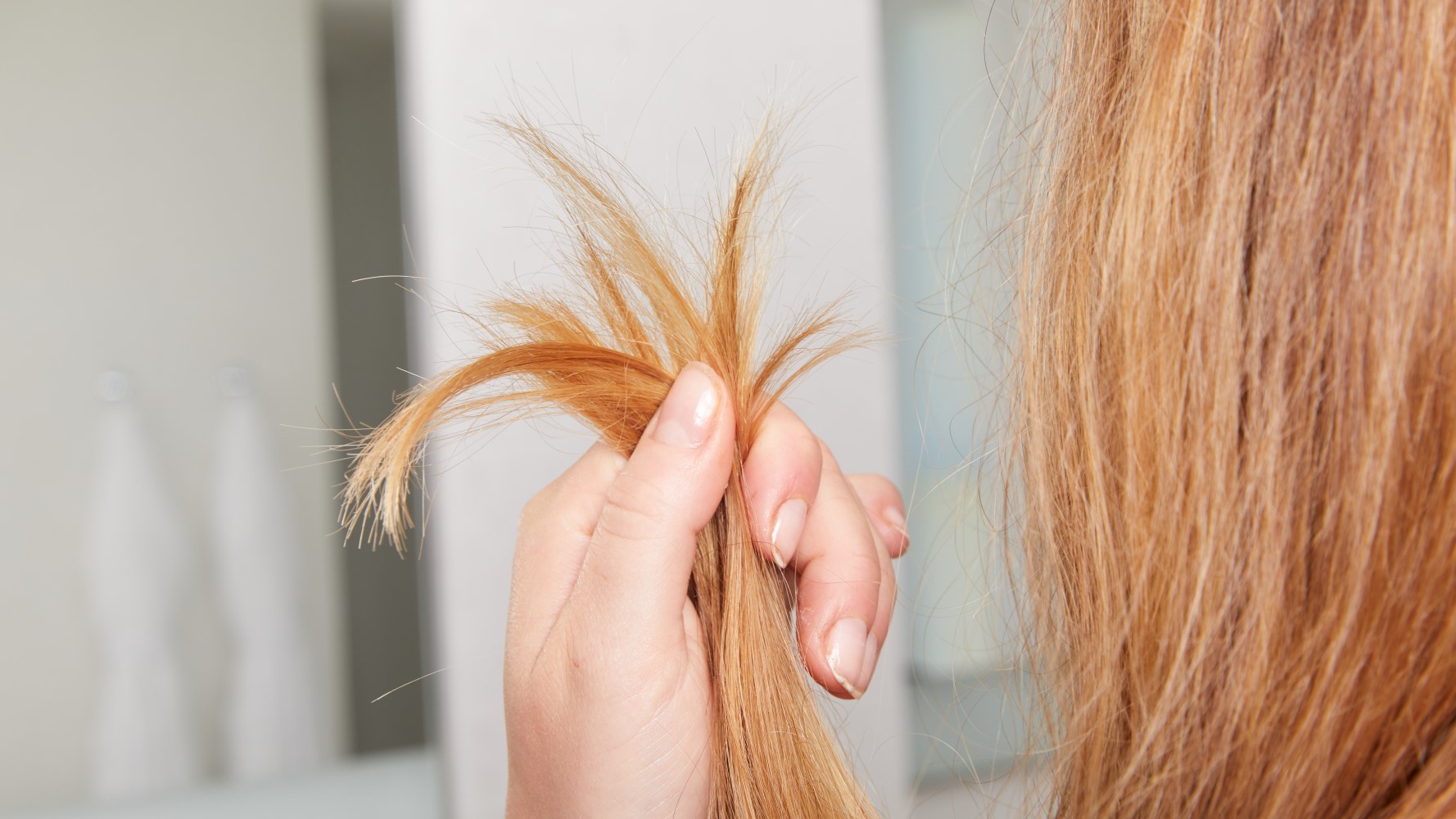CLINIC CONSULTATIONS
If you would like to find out more about the risks and benefits of different hair treatments, our Clinics specialise in all aspects of hair and scalp health. We will be delighted to welcome you.
Split ends are one of the most common hair woes, but knowing how to tackle them can make all the difference. Here we explore what split ends actually are, why they happen and how to care for your hair to stop them in their tracks. Our expert in-house Trichologists also share their best advice for healthier, stronger and smoother hair.
What are Split Ends?
Split ends happen when the tips of your hair become dehydrated or damaged (often from environmental stress, heat styling, or chemical treatments) and eventually weaken until they fracture or split. They can leave your hair looking frizzy and dull. In some cases, the damage can even travel up the hair shaft, increasing the risk of breakage and giving that frayed look.
What Should You Do About Split Ends?
Split ends can feel like a persistent hair dilemma. The truth is, once a split end appears, it cannot be fully repaired. However, you can temporarily smooth and protect them using leave-in conditioners or smoothing balms, such as our Split End Remedy, which help seal the hair and reduce frizz. Keep in mind, these solutions only last for a few washes. The only permanent fix is to trim the split ends and take proactive steps to prevent them from coming back.
How to Remove Split Ends
Trimming your hair is essential, but it doesn’t always eliminate every split end. Hair grows in varying lengths because each follicle has its own growth cycle, meaning some splits may remain between trims. For the most precise and effective results, it’s always best to consult a professional stylist who can carefully remove damaged ends while preserving your hair’s overall length and shape.
How to Remove Split Ends
Thankfully there are plenty of things you can do to help futureproof your hair against split ends. Here are some of our tried and tested top tips from our in-house Trichologists:
Always brush gently
One of the simplest ways to protect your hair is by brushing gently. The type of brush you use has a big impact here. We recommend one with plastic prongs with round ends, and if using a bristled brush, choose only soft bristles, ideally combined with plastic prongs like our Radial Brush.
Ease out tangles
Use a wide-tooth comb to remove knots and tangles, ideally with conditioner in your hair. Start at your ends and gently work upwards to your roots. If you start at the top, or go at them with a brush, you can snap your hair along the shaft and leave yourself with split ends throughout your lengths - something we definitely want to avoid.
Use a deep-conditioning hair mask
Apply an intensive pre-shampoo conditioning treatment (like our bestselling Elasticizer ) once or twice a week, depending on your hair texture. This works wonders for keeping your ends supple and hydrated. This is even more important if you have hair below shoulder-length or chemically processed hair, since the ends will naturally be more weathered. Moisturised, hydrated hair is the goal as it’s more elastic and therefore less likely to split.
Use a weekly bond repair treatment
Another effective way of reducing split ends is by using intensive treatments designed to tackle damage which is the main culprit responsible for hair snapping and splitting. Our Bond Builder Restructuring Treatment has been expertly formulated to strengthen and repair bonds inside the hair, and is proven to leave hair up to three times more resistant to damage*. With continued use, your hair will be less brittle, you'll see fewer split ends and strands will have increased resistance against breakage.
Use both for maximum hair health
For hair that it’s the healthiest it can be, with maximum protection against split ends and breakage, our Trichologists recommend two pre-shampoo treatments per week, alternating Elasticizer Deep-Conditioning Treatment and Bond Builder Restructuring Treatment. For a complete, all-encompassing haircare routine, treat your hair to a mid-week Elasticizer to tackle dryness, followed by a spot of weekend damage repair with Bond Builder Restructuring Treatment.
Smooth your strands
A detangling serum or spray like our Daily Damage Defence Leave-In Conditioner is a non-negotiable for your mid-lengths and ends. This will help tackle tangles, smooth interlocked cuticles and reduce friction when combing.
Towel dry gently
If you rub your hair roughly when towel-drying, you can cause knots and breakage, which leads to split ends. Instead, gently squeeze excess moisture from your hair. A microfibre towel can be especially effective.
Go easy with the hairdryer
Use a lower heat setting and turn off the heat when your hair is ‘just dry’. Over-drying can scorch and dehydrate your ends, which is one of the main causes of splitting. Always remember to hold the dryer at least 6 inches from the hair. If it’s too hot for your hand, it’s too hot for your hair.
Use UV protection
UV rays aren’t just harmful for your skin… they can also cause damage to hair proteins leaving it both dry and brittle. If you are in the sun for a long time, shield your hair with a leave-in UV protector like our Swimcap. Wearing a hat also helps keep your hair and scalp protected.
Safeguard against heat styling
Straighteners and tongs reach very high temperatures and are another common cause of split ends. If you are using a heat styler, always apply a heat protector product (like our Perfecting Primer Heat Protection Spray) to help limit the damage.
Alternatively, if you’d prefer to seek help from the professionals, our Clinics in London and New York specialise in hair and scalp treatments and will be delighted to welcome you.
How to Prevent Split Ends
Your Most Asked Questions, Answered
Q: How do split ends form?
A: Split ends form when the hair’s protective outer layer wears down due to heat styling, chemical treatments, rough handling or lack of moisture, leaving the strands weak and prone to fraying.
Q: Can split ends be repaired?
A: No - unfortunately not. Once a split end appears it cannot be repaired. The only real solution is to trim it off, though smoothing products can temporarily seal and disguise them a little.
Q: Do split ends affect hair growth?
A: Split ends don’t stop hair from growing at the root, but they can cause breakage that makes hair appear shorter and less healthy over time.
Q: Are there different types of split ends?
A: Yes, split ends can look different depending on the damage, from ‘Y-shaped’ splits to more complex branching types like forked or tree-like splits.
Q: Can I hide split ends without cutting them?
A: You can temporarily conceal split ends with leave-in conditioners, serums or styling balms, but trimming them is the only way to remove them completely.
Q: How often should I trim my hair to prevent split ends?
A: We recommend trimming every 6-8 weeks to keep ends healthy and stop them from traveling up the hair shaft.
Q: Can hair masks help with split ends?
A: Hair masks can’t mend split ends, but they can deeply hydrate and strengthen strands which makes them less likely to split in the future.
Q: Does hair texture affect split ends?
A: Yes, certain textures (like curly or fine hair) are more prone to dryness, tangling and damage, which can increase the risk of split ends.
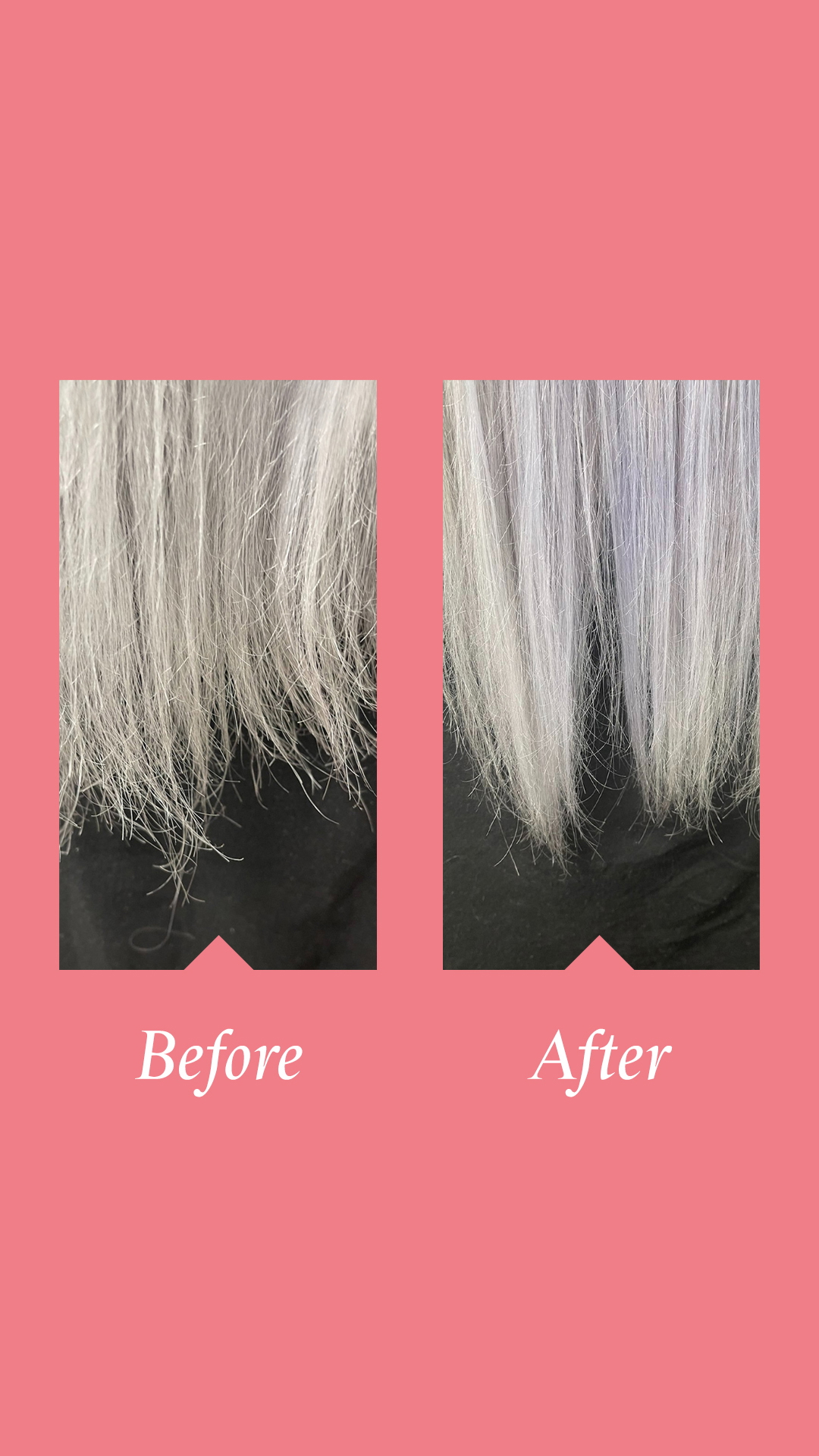
SHOP BOND BUILDER
